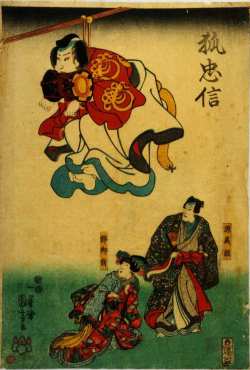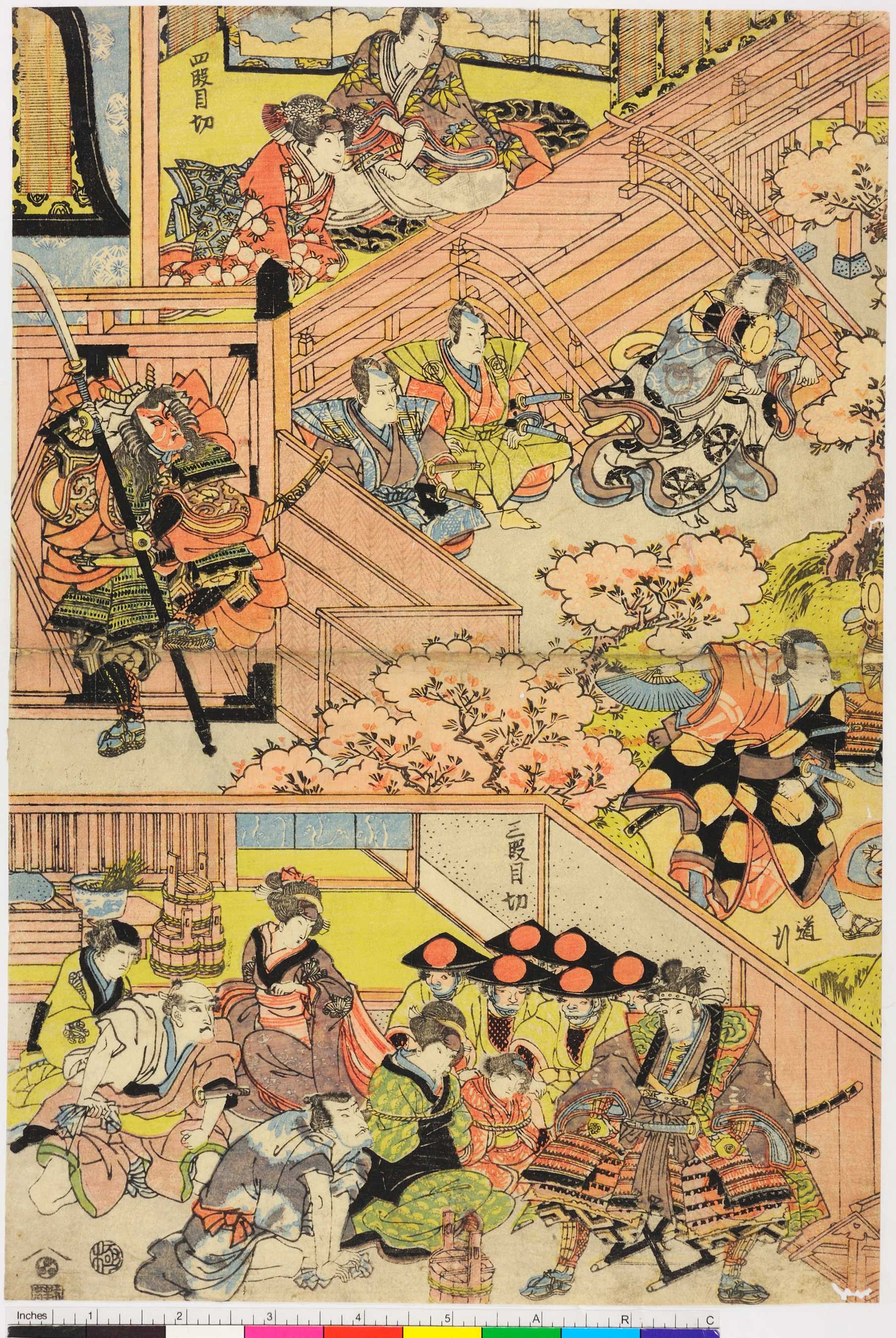H05 Yoshitsune Senbon-zakura (Chunori)
-
"Yoshitsune Senbonzakura"
Artist: Toyokuni the first Oban, Colour print, the of triptych
Published: ca.1815(Bunka 12), Edo
Ritsumeikan Art ResearchCenter (arcUP4086)

The stage effect named "Chu-nori" or "Chu-zuri" which is also commonly known as "Fuwa furwa" is lifting an actor's body in the air, allowing him to move above the stage and Hanamichi (actors' pathway), and showing his floating in the air to spectators. In the mechanic of Edo period, an actor in a special suit called "Renjyaku" was suspended with a rope which is fastened with a wooden cart called "Geta" attached on the ceiling of the stage which was called "Sunoko". The cart ran along with a ditch curved on the ceiling and drove him. However, because many accidents occurred because of this method, it is no longer used. In modern stage equipment, wire rope is used instead of rope and iron instruments is introduced instead of wooden tools.
"Chunori" enables to represent the supernatural characters effectively, such as Yokai (monstrous creatures), ghosts, and foxes. This picture describe the last scene of "Yoshitsune Senbon-zakura" which contains "Chunori". "Genkuro Kitsune" (a fox) which is named after the historical hero Minamoto Yoshitsune slays the enemies with his magical power and receives a hand drum made of his parents' skin as a reward from a heroine. When he have it, he is so pleased and he go away as floating in the air. (,)

[Glossary]
Yoshitsune Senbonzakura、Renjyaku【参考文献】
≪ 続きを隠す
服部幸雄著 『歌舞伎をつくる』 1999年 青土社
釘町久磨次著 『歌舞伎大道具師』 1991年 青土社
-

- 投稿日:
- by 8P
- カテゴリ: H Performance and Stage Effect
- [編集]